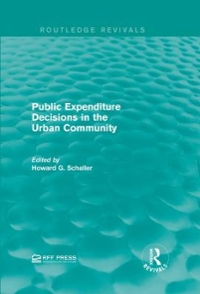Question
3. Part A. Read the following excerpt from Poor Economics (chapter 6) by Banerjee and Duflo. Some types of risk ought to be easier to
3. Part A.
Read the following excerpt from "Poor Economics" (chapter 6) by Banerjee and Duflo.
Some types of risk ought to be easier to insure than others. Consider weather for example. A farmer should value a policy that pays him a fixed amount (based on the premium he paid) when the rainfall measured at the nearby weather station falls below a certain critical level.
(a) Using the concepts studied in this course, can you explain why the risks described by Banerjee and Duflo are easier to insure than others? (Please explain briefly. One or two sentences are enough)
Part B.
In Mongolia, winters can be of two types, "cold" or "very cold". If the winter is "very cold", there is a probability = 0.5 that a farmer loses 90% of her livestock (sheep, goats etc.). If the winter is just cold, all the farmer's livestock survive. The probability of "very cold" winters is p = 0.2 (and therefore the probability of "cold" winters is 0.8). In other words, each winter the farmer in Mongolia faces the following lottery
l = 1000 with prob. 1 (p) = 0.9
I= 100 with prob. p = 0.1
(b) Calculate the expected value of the lottery l
(c) Now assume that, before the winter begins1, a (risk neutral) insurance company offers a fairly priced policy. Also assume that the insurance company does not fix the coverage C, but lets the customer choose C. Under these assumptions, will a risk averse farmer buy insurance? If so, how much coverage C will he choose? What is the premium?
(d) Now assume that before the winter begins, the farmer can take some actions that reduce the probability of losing the livestock (if the winter is "very cold"). In particular, assume that the farmer can take a binary action e (that is either e = 0 or e = 1). If she chooses e = 0, then = 0.5
(like before in the first part of the exercise), while if she chooses e = 1, then = 0.25; however choosing e = 1 is costly and reduces the income by (that is if e = 1, the income is I ). In other words, if e = 0 the farmer faces the same lottery as in (2), that is
I (e=1) = 1000 with prob. 1 (p) = 0.9 & 100 with prob. p = 0.1
(3)
However, if the farmer chooses e = 1, the lottery that she faces is now
I (e=1) =1000 with prob. 1 (p) = 0.95 & 100 with prob. p= 0.05
i. Assume that = 40. Would a risk neutral individual choose e = 1?
ii. For = 40, describe the set of all Pareto efficient allocations. Explain. (Note the farmer is risk averse and the insurance company is risk neutral)
iii. Show that if the action e is hidden, and the farmer is risk averse, it is impossible to achieve the Pareto efficient allocation by trading (that is by buying and selling insurance policies)
(e) Keep assuming that the insurance company cannot observe the action e chosen by the farmer. Now assume that the insurance company offers a different type of insurance (call it a catastrophic insurance) for the farmers in Mongolia. Before the beginning of the winter, the insurance company collects a premium P from the farmer. Then, if the winter is just "cold", the insurance company does not pay anything to the individual; if the winter is "very cold" the insurance company pays
a coverage C to the individual, no matter if the farmer loses the (%90 of the) livestock or not (and no matter what is the hidden action e chosen by the farmer).
i. Calculate the fair premium for this insurance product. (Recall, the probability of "very cold" winter is p = 0.2)
ii. Do you think that this insurance policy presents a moral hazard problem? Explain.
iii. Illustrate the lotteries for the farmer if
She buys the insurance and chooses e = 0
She buys the insurance and chooses e = 1
(like before assume I = 1000, L = 900, = 40, p = 0.2, = 0.5 and = 0.25)
iv. Now assume that a risk averse individual chooses to buy the fair insurance with coverage C = 900 and chooses also the action e = 1. Is the resulting allocation Pareto efficient? Why or why not? (keep assuming a risk averse individual and the risk neutral insurance company).
Step by Step Solution
There are 3 Steps involved in it
Step: 1

Get Instant Access to Expert-Tailored Solutions
See step-by-step solutions with expert insights and AI powered tools for academic success
Step: 2

Step: 3

Ace Your Homework with AI
Get the answers you need in no time with our AI-driven, step-by-step assistance
Get Started


